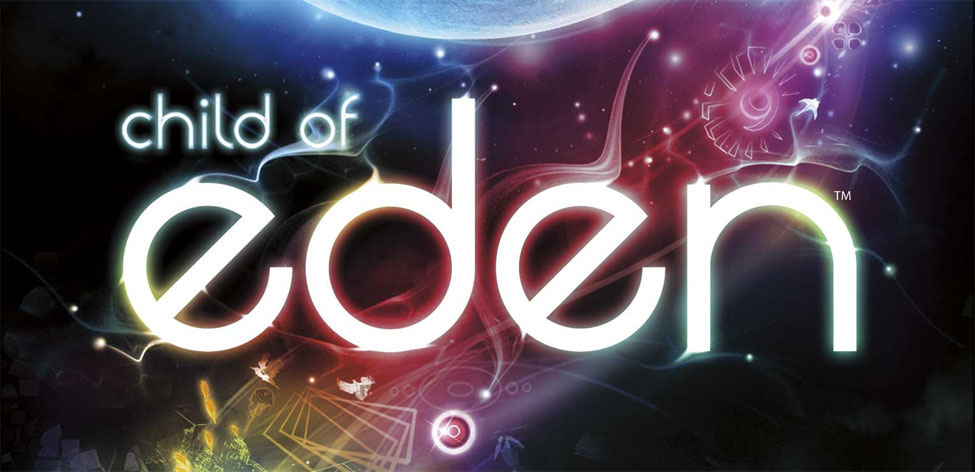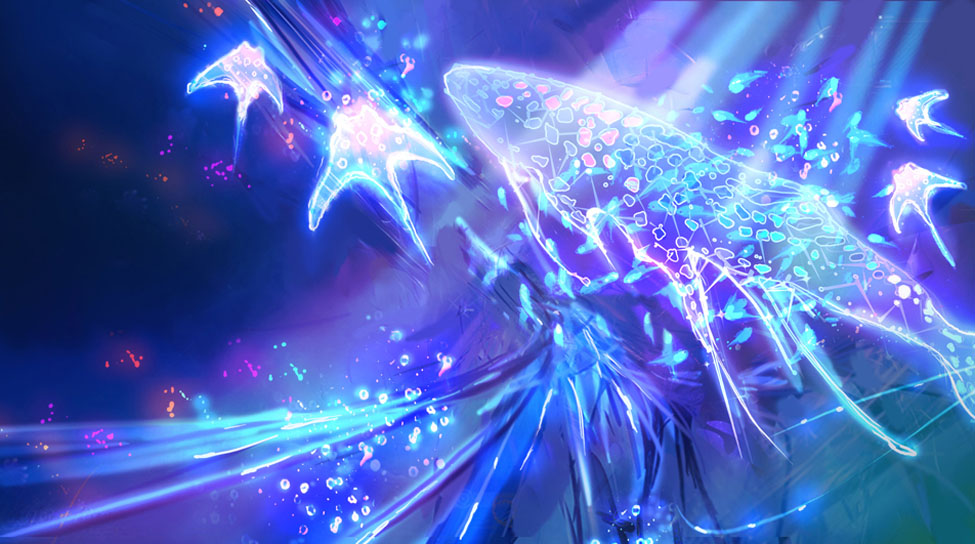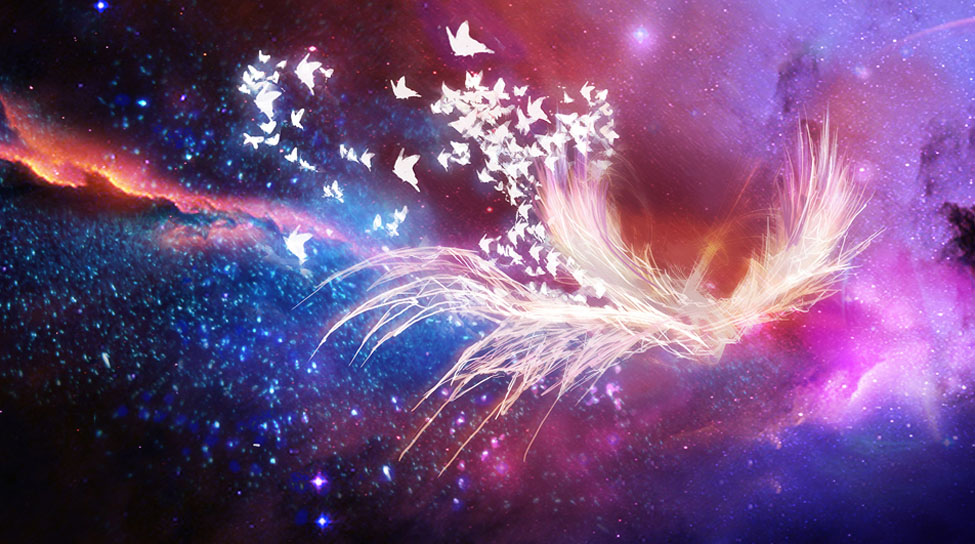Child of Eden review: Fleeting Genius
If I had to categorize Child of Eden, it would be a “first person J-pop electronica visualizer science fiction dance rail shooter”. While that sounds like a disjointed mouthful, everything flows together seamlessly. Taking place in the same universe as Q Entertainment’s earlier Rez, Child of Eden ups the ante in all respects, making it a singular experience, that all but achieves designer Tetsuya Mizuguchi’s goal of inducing synesthesia in the player, delightfully crossing the wires between sound and vision. Toss in the Kinect for good measure, and you become the conductor of your own personal rave, with the screen taking on the role of glowsticks.
Synesthesia is a neurologically-based condition in which stimulation of one sensory or cognitive pathway leads to automatic, involuntary experiences in a second sensory or cognitive pathway. People who report such experiences are known as synesthetes. [from Wikipedia]
The story goes like this: In the future, Earth has gone to pot, and all the knowledge of the internet is stored in vast archives called Eden, the AI from Rez. Beyond raw knowledge, Eden also encompasses all of human experience, including the archive of Lumi, the first person born in space. Eden is in the process of rebuilding Lumi’s consciousness, but as luck would have it, a virus is spreading through the system, and it’s up to you to save her.
To do so, you’ll have to travel through the five archive sections of Eden, purifying the data. Each archive has its own thematic design, from underwater fauna to steampunk influenced gears and mecha. As each archive is purified, more aspects of Lumi are resolved, until the climactic ending, which I’m not going to spoil here.
Gameplay
Mechanics in Child of Eden are deceptively simple, and an evolution of the controls in Rez. This time around, you don’t see your avatar, making it a true first person view. The Octo-Locking laser reticule is still here, where you can highlight up to 8 targets at once before launching a barrage. Using your right hand, you sweep across the screen to target multiple enemies, and fire by flicking your hand forward. In addition, there’s a new Tracer reticule that you can switch to that fires a constant stream of projectiles. Using the Tracer in Kinect mode is straight forward. The reticule is controlled with your left hand, and there’s no need to activate anything as it’s always on. Regardless of which weapon you’re using, at some points in the game it can also be used to look around the environment. Some enemies (and their missiles) can only be destroyed with the Tracer. If missiles are off-screen, the HUD will indicate where they’re located. At certain points in the game, I found myself trying to get one more octo-blast in before the missiles got too close, which can make for some intense moments.
The game also comes with smart bombs, in the form of Euphoria, which can save your digitized ass if you’ve let the enemy get out of control. Activate Euphoria, and you’ll clear the screen of lesser enemies and missiles, granting you a brief reprieve.
While it’s the Tracer that will save you, the Octo-Lock is where the potential to max out your score comes in. When you’ve populated an enemy (or enemies) with your Octo-Lock, and you fire in time with the beat, you can get a Good or Perfect bonus multiplier. This isn’t as cut and dried as it sounds though. The music is layered, and as the game progresses the beat becomes increasingly complex. Throw in the synthesized vocals and other electronic riffs, and it becomes quite a challenge. It becomes less about clinical observation, and more about just ‘feeling’ when the moment is right. It’s probably the same feeling that Luke Skywalker had when listened to Obi-Wan and decided to go with the Force.
Child of Eden is one of very few games (maybe the only) I know of so far that can be played with either the controller, or via Kinect. While playing with a controller is a good way to experience the game, if you have a Kinect, it’s truly the way to go for an immersive experience, which gives you the sense of conducting an experience as opposed to playing one. It can get tricky at points, as if you bring one hand down too quickly before raising the other, you can get some annoying camera and reticule snap that can throw you off your game. In this respect, playing with the controller is probably going to net you a higher score, and this is reflected in the leaderboards. To respect that, Q Entertainment has segregated the leaderboards into separate sections for Kinect and controller play.
Sound and Vision
Speaking of the environment, it’s absolutely stunning. While I could write about the electroluminescent jellyfish floating through the ether, or the boss battle with two giants, seemingly brought to life from ancient constellations, the words and screenshots won’t do it justice. I don’t suspect videos of gameplay will quite capture it either. The same applies to the music, which while still firmly rooted in electronica, has a somewhat more organic tone to it for the most part. The Genki Rockets soundtrack still has that Rez vibe a la Underworld or Oakenfold, but the Rockets’ Jpop influence is there, under the surface, much in the way that Lumi herself is under the surface of abstract polygons and glowing space whales, waiting to be freed.
That’s because the sound and vision of the game go hand in hand, and when playing with the Kinect becomes a visual soundscape of your own crafting.
The only drawback is that Child of Eden is extremely short. It’s entirely possible to finish a playthrough of the game in less than 2 hours, as long as you are good enough to get the requisite number of stars to continue to the next archive. To increase playability, there are a number of unlockable items in the gallery, which you can build upon each time you finish a level, and once you finish the story mode, a more difficult mode is available, as well as a new level called “Hope” which is a shoot-em-up extravaganza, as well as an enemy free mode that allows you to just travel through Eden.
Depending on the type of gamer you are, all this may or may not add value to it. If you generally beat a game once and move on, the cost of admission is pretty steep. The aesthetics of the game are outside the norm as well, making it a quirky game with possibly a limited appeal. All that being said, Child of Eden is more than the sum of its parts. There are points in the game that are so beautiful, even inspirational, that it can only be experienced by playing it. It’s a singular work that had me grinning all through it, and I know I’ll be going back for more.

















Oh nice, thanks for share!